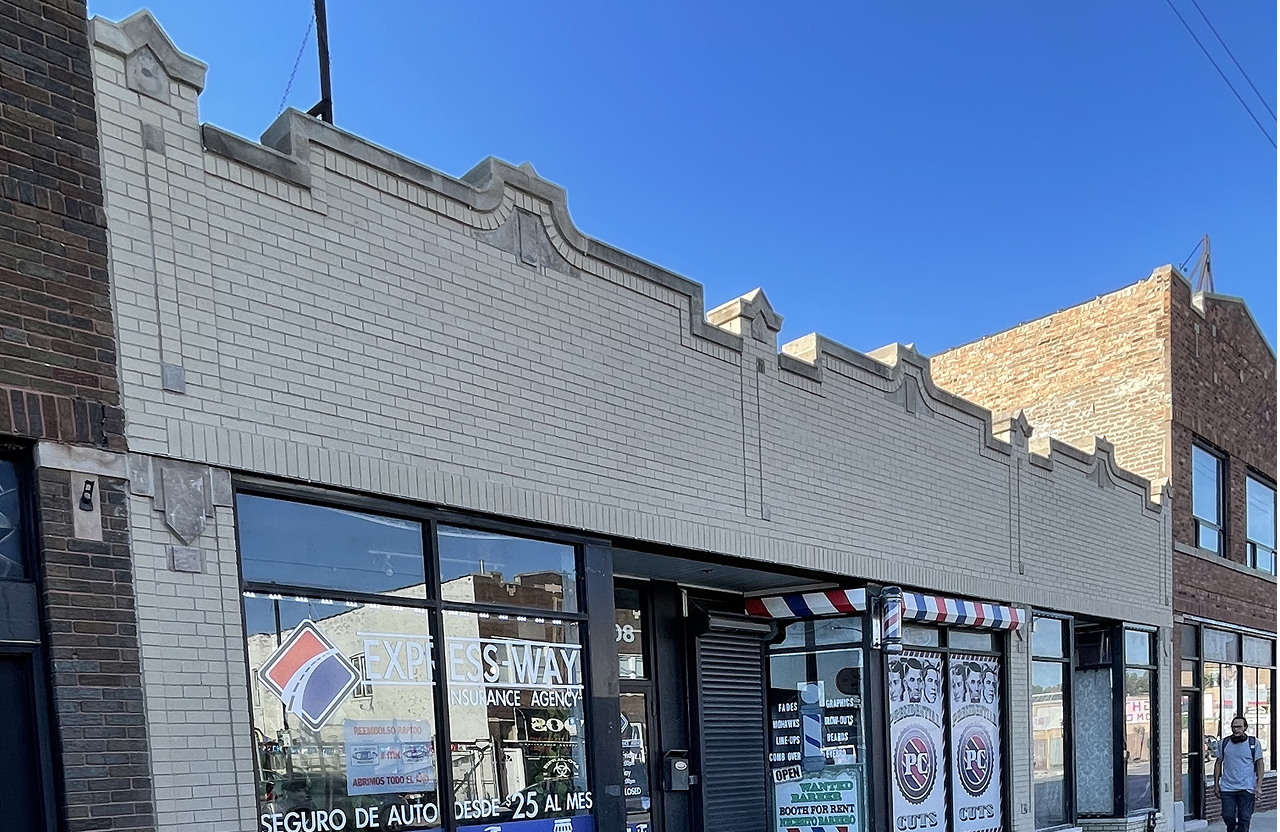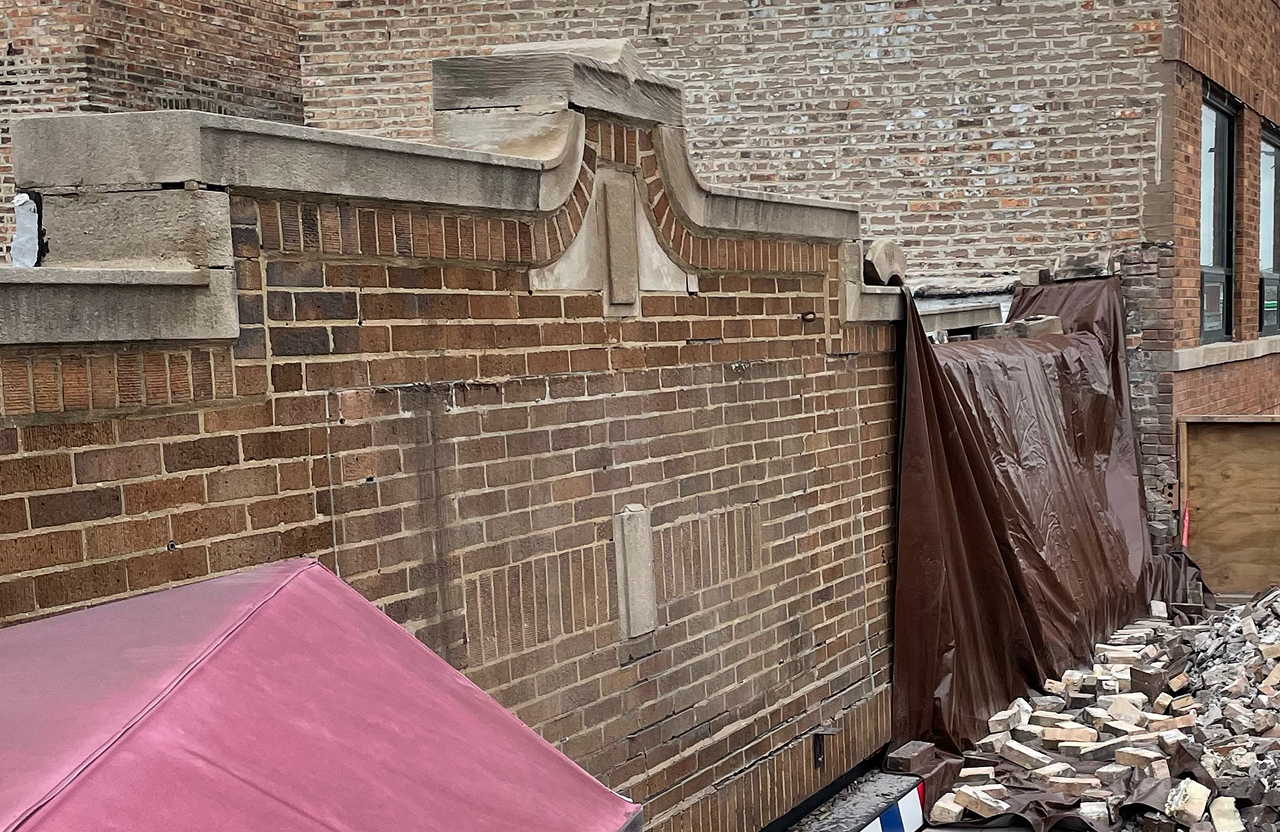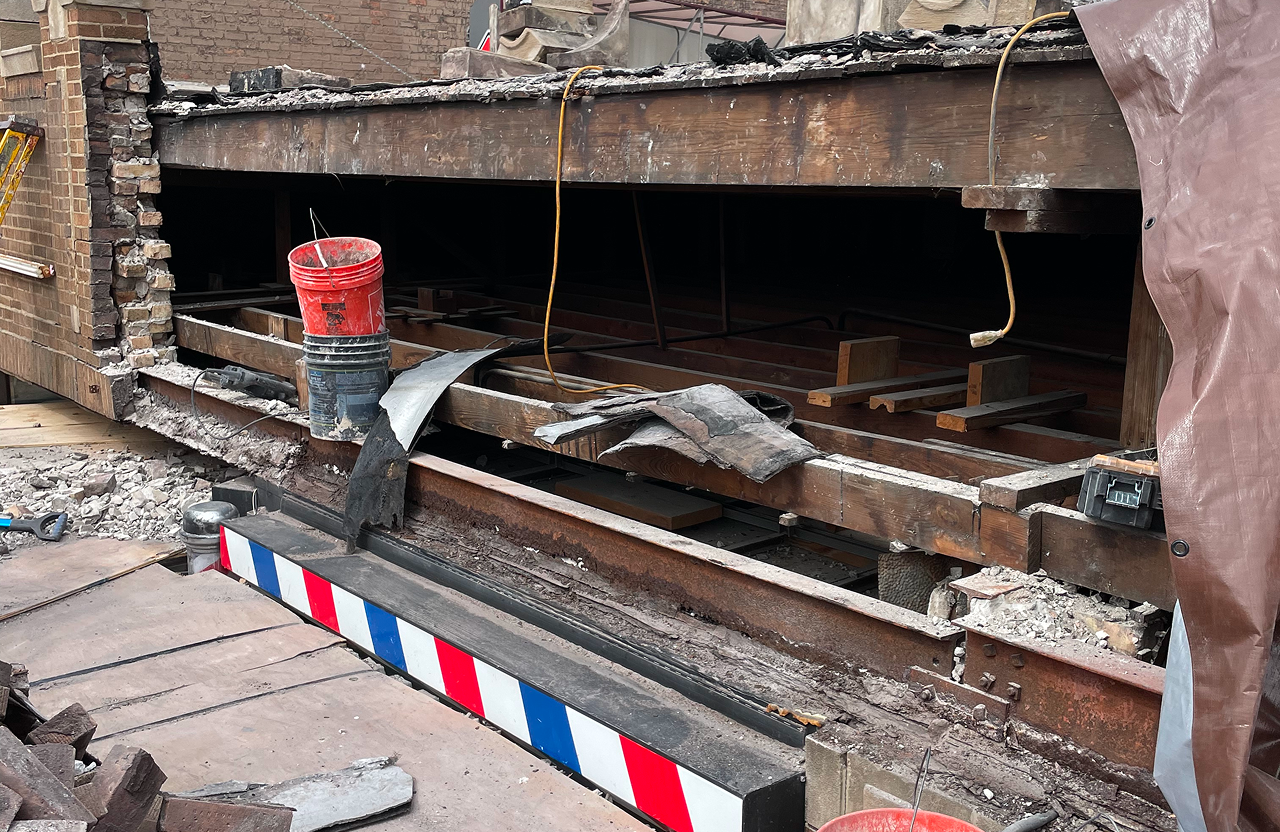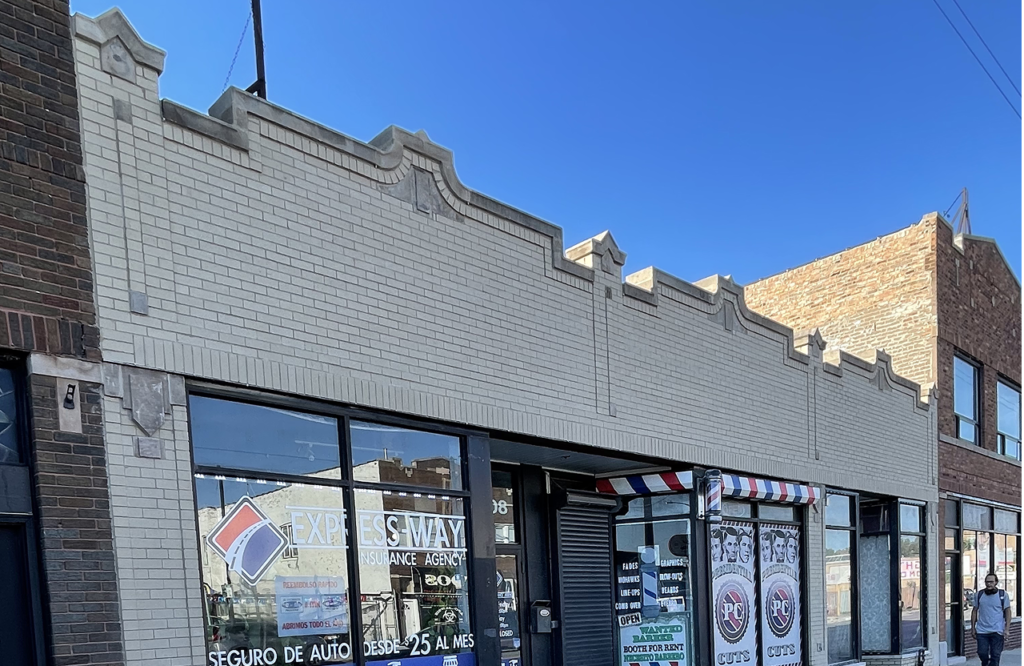The Importance of Masonry Parapet Repair and Rebuilding
March 21, 2025
The Importance of Masonry Parapet Repair and Rebuilding
March 21, 2025

Masonry parapets are an integral part of many buildings, providing both aesthetic and functional benefits. These short walls, which extend above the roofline, help shield roofs from wind and water damage, enhance fire resistance between buildings, and often contribute to the overall architectural appeal, however, due to their exposure to the elements, masonry parapets are particularly vulnerable to deterioration over time. Failing to maintain, repair or rebuild these elements as necessary can lead to costly repairs, safety hazards, costly repairs, and possible structural damage or water infiltration.
Why Masonry Parapets Deteriorate
Parapets are more exposed to the elements than other parts of a building, making them especially susceptible to long term exposure and weathering. Some of the most common causes of parapet deterioration include:
- Water Infiltration – Rain, snow, and freeze-thaw cycles cause water to soak the masonry. As the water expands and contracts with temperature changes, the thermal differentiation can lead to spalling (flaking or breaking of the masonry surface) and cracking and erosion of the mortar joints.
- Thermal Expansion and Contraction – Constant exposure to heat and cold causes the masonry to expand and contract. Over time, this movement can create cracks and instability.
- Structural Weakness – Poor original construction, lack of reinforcement, or improper materials can cause parapets to weaken faster than the rest of the building.
- Wind and Seismic Stress – Because parapets extend above the roofline, they experience higher wind loads and are more susceptible to movement from earthquakes or other ground shifts. Additionally, they are exposed on both sides of the masonry wall, further increasing their exposure, thus accelerating deterioration.
If left unaddressed, these factors can lead to partial or complete parapet failure, putting pedestrians, occupants, and the building itself at risk.



The Importance of Timely Parapet Repair and Rebuilding
1. Preventing Structural Damage
A damaged parapet can compromise the structural integrity of the entire building. Water infiltration through both large and narrow cracks can extend beyond the parapet, causing prolonged dampness of the masonry walls. In turn, this can lead to mold growth and interior damage, but also increased deterioration and weakening of load -bearing wood
floor joints or other structural elements. By addressing early signs of masonry parapet deterioration, building owners can prevent widespread structural issues.
2. Enhancing Safety
A failing masonry parapet poses a serious safety hazard. Loose bricks and deteriorating mortar joints can cause pieces of masonry to fall, creating the potential for injury to pedestrians and building occupants. In severe cases, an unstable parapet can collapse, endangering lives and leading to significant property damage. Regular inspections and timely repairs help mitigate these risks and ensure a safe environment.
3. Compliance with Building Codes and Insurance Requirements
Many municipalities have strict building codes that require parapets to be maintained in a safe condition. Failing to repair or rebuild a deteriorating parapet can lead to fines, legal liabilities, and potential difficulty in obtaining insurance coverage. Additionally, insurance companies may require building owners to address parapet issues before renewing policies or paying out claims related to damage caused by neglect.
4. Improving Weather Protection
Parapets play a crucial role in protecting a building’s roof and walls from the elements. Repairing and properly waterproofing a parapet—including installing coping stones, metal flashing, and proper drainage—helps prevent moisture-related damage and extends the lifespan of the entire building.
5. Preserving Historic and Architectural Integrity
On historic properties, parapets can be one of the building’s character-defining architectural features. Crumbling parapets can compromise the original design, reducing the visual appeal and historical value of a structure. Proper repair and restoration techniques, including matching original materials in-kind and masonry bond patterns, help preserve the character of the building while ensuring it is structurally sound.
Best Practices for Parapet Repair and Rebuilding
- Regular Inspections – Building owners should schedule periodic inspections, particularly after severe weather events. Identifying early signs of deterioration—such as cracks, loose bricks, and mortar erosion—can prevent more extensive damage.
- Using Quality Materials – When repairing or rebuilding a parapet, it is essential to use high-quality bricks, mortar, and reinforcement materials that match the original structure and can withstand environmental exposure.
- roper Waterproofing – Applying waterproof sealants, installing metal coping, and ensuring proper drainage can help prevent future moisture infiltration and prolong the life of the parapet.
- Hiring Professional Masons – Working with experienced masonry contractors like Jagra Corp. ensures that repairs and rebuilding efforts are done safely and according to industry best practices.
Masonry parapets play an importantl role in both the safety and aesthetic appeal of a building. Timely repair and rebuilding efforts help prevent structural damage, enhance safety, comply with building regulations, and preserve architectural integrity. By investing in proper maintenance and restoration, building owners can avoid costly repairs and ensure that their parapets remain stable and durable for years to come. Regular inspections, high-quality materials, and professional craftsmanship are key to maintaining the long-term health of masonry parapets.
 Written by Reba Ashby
Written by Reba Ashby
A historic preservationist specializing in traditional masonry, architectural conservation, and building assessments.

The Importance of Masonry Parapet Repair and Rebuilding
Masonry parapets are an integral part of many buildings, providing both aesthetic and functional benefits. These short walls, which extend above the roofline, help shield roofs from wind and water damage, enhance fire resistance between buildings, and often contribute to the overall architectural appeal, however, due to their exposure to the elements, masonry parapets are particularly vulnerable to deterioration over time. Failing to maintain, repair or rebuild these elements as necessary can lead to costly repairs, safety hazards, costly repairs, and possible structural damage or water infiltration.
Why Masonry Parapets Deteriorate
Parapets are more exposed to the elements than other parts of a building, making them especially susceptible to long term exposure and weathering. Some of the most common causes of parapet deterioration include:
1. Water Infiltration – Rain, snow, and freeze-thaw cycles cause water to soak the masonry. As the water expands and contracts with temperature changes, the thermal differentiation can lead to spalling (flaking or breaking of the masonry surface) and cracking and erosion of the mortar joints.
2. Thermal Expansion and Contraction – Constant exposure to heat and cold causes the masonry to expand and contract. Over time, this movement can create cracks and instability.
3. Structural Weakness – Poor original construction, lack of reinforcement, or improper materials can cause parapets to weaken faster than the rest of the building.
4. Wind and Seismic Stress – Because parapets extend above the roofline, they experience higher wind loads and are more susceptible to movement from earthquakes or other ground shifts. Additionally, they are exposed on both sides of the masonry wall, further increasing their exposure, thus accelerating deterioration.
If left unaddressed, these factors can lead to partial or complete parapet failure, putting pedestrians, occupants, and the building itself at risk.



The Importance of Timely Parapet Repair and Rebuilding
1. Preventing Structural Damage
A damaged parapet can compromise the structural integrity of the entire building. Water infiltration through both large and narrow cracks can extend beyond the parapet, causing prolonged dampness of the masonry walls. In turn, this can lead to mold growth and interior damage, but also increased deterioration and weakening of load -bearing wood
floor joints or other structural elements. By addressing early signs of masonry parapet deterioration, building owners can prevent widespread structural issues.
2. Enhancing Safety
A failing masonry parapet poses a serious safety hazard. Loose bricks and deteriorating mortar joints can cause pieces of masonry to fall, creating the potential for injury to pedestrians and building occupants. In severe cases, an unstable parapet can collapse, endangering lives and leading to significant property damage. Regular inspections and timely repairs help mitigate these risks and ensure a safe environment.
3. Compliance with Building Codes and Insurance Requirements
Many municipalities have strict building codes that require parapets to be maintained in a safe condition. Failing to repair or rebuild a deteriorating parapet can lead to fines, legal liabilities, and potential difficulty in obtaining insurance coverage. Additionally, insurance companies may require building owners to address parapet issues before renewing policies or paying out claims related to damage caused by neglect.
4. Improving Weather Protection
Parapets play a crucial role in protecting a building’s roof and walls from the elements. Repairing and properly waterproofing a parapet—including installing coping stones, metal flashing, and proper drainage—helps prevent moisture-related damage and extends the lifespan of the entire building.
5. Preserving Historic and Architectural Integrity
On historic properties, parapets can be one of the building’s character-defining architectural features. Crumbling parapets can compromise the original design, reducing the visual appeal and historical value of a structure. Proper repair and restoration techniques, including matching original materials in-kind and masonry bond patterns, help preserve the character of the building while ensuring it is structurally sound.
Best Practices for Parapet Repair and Rebuilding
1. Regular Inspections – Building owners should schedule periodic inspections, particularly after severe weather events. Identifying early signs of deterioration—such as cracks, loose bricks, and mortar erosion—can prevent more extensive damage.
2. Using Quality Materials – When repairing or rebuilding a parapet, it is essential to use high-quality bricks, mortar, and reinforcement materials that match the original structure and can withstand environmental exposure.
3. Proper Waterproofing – Applying waterproof sealants, installing metal coping, and ensuring proper drainage can help prevent future moisture infiltration and prolong the life of the parapet.
4. Hiring Professional Masons – Working with experienced masonry contractors like Jagra Corp. ensures that repairs and rebuilding efforts are done safely and according to industry best practices.
Masonry parapets play an importantl role in both the safety and aesthetic appeal of a building. Timely repair and rebuilding efforts help prevent structural damage, enhance safety, comply with building regulations, and preserve architectural integrity. By investing in proper maintenance and restoration, building owners can avoid costly repairs and ensure that their parapets remain stable and durable for years to come. Regular inspections, high-quality materials, and professional craftsmanship are key to maintaining the long-term health of masonry parapets.

Written by Reba Ashby
A historic preservationist specializing in traditional masonry, architectural conservation, and building assessments.
